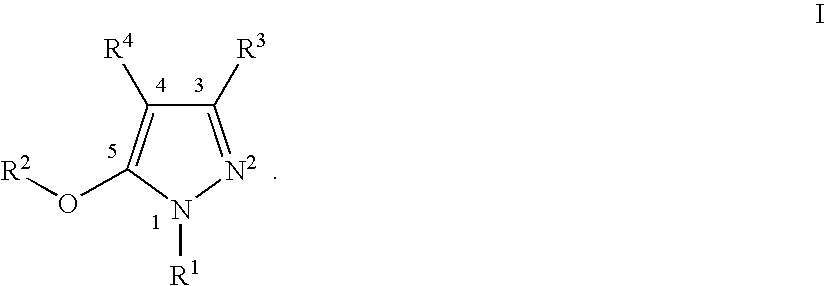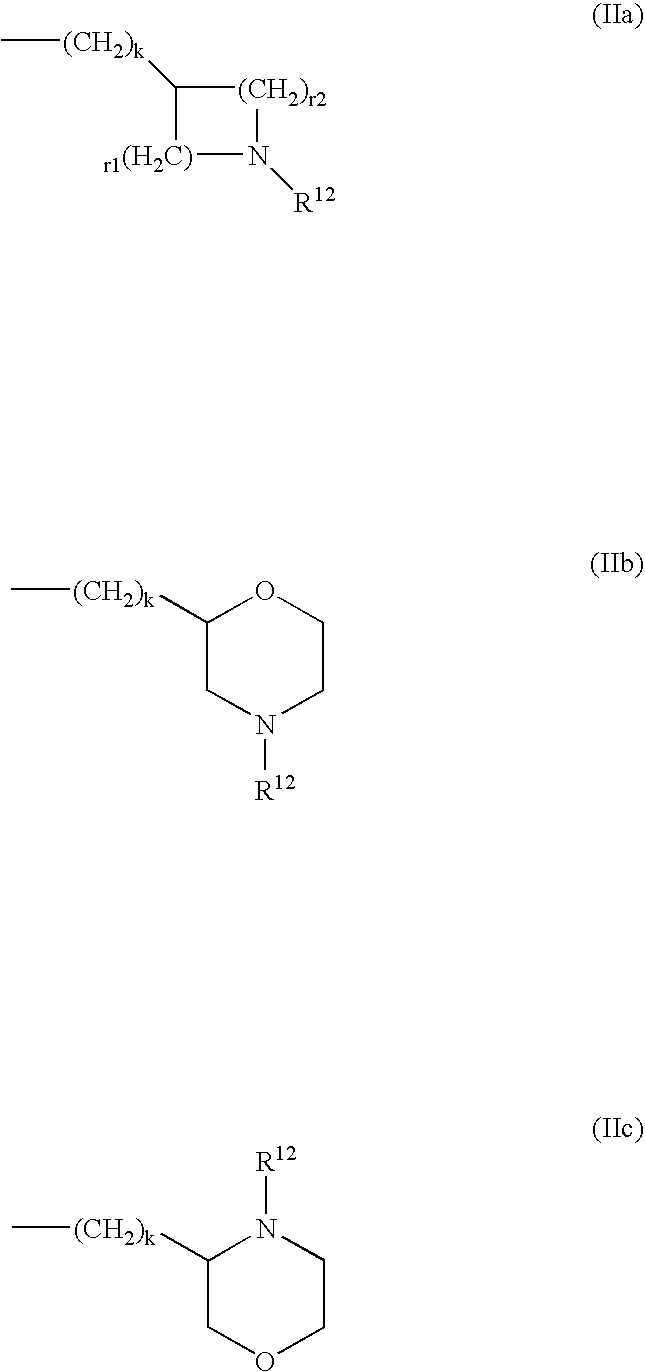Nonnucleoside reverse transcriptase inhibitors
a reverse transcriptase inhibitor and non-nucleoside technology, applied in the field of antiviral therapy, can solve the problems of slowed disease progression, significant therapeutic problems, and high viral load
- Summary
- Abstract
- Description
- Claims
- Application Information
AI Technical Summary
Problems solved by technology
Method used
Image
Examples
example 1
5-Hydroxy-1H-pyrazole-3-carboxylic acid ethyl ester
[0142]
[0143]Diethyloxalacetate, sodium salt (14.53 g, 69.15 mmol) was dissolved in 100 mL of benzene and stirred for 20 min. To the solution was added 100 mL of acetic acid and the reaction mixture was stirred for a further 30 min. Hydrazine monohydrochloride (9.47 g, 138 mmol) was added and the reaction mixture was stirred for an additional 30 min. The reaction was brought to reflux at 100° C. for 24 h. The reaction was then removed from heat and cooled to room temperature and extracted with EtOAc and washed with 10% hydrochloric acid, saturated sodium bicarbonate solution, water and then brine. The solvent was removed in vacuo to yield an oily solid which was then triturated with a 2:1 mixture of diethyl ether:hexanes to yield 3 (10.00 g, 92%) as an off-white solid: LRMS (electrospray); m / z [M+H]+=157.
example 2
5-(tert-Butyl-dimethyl-silanyloxy)-1H-pyrazole-3-carboxylic acid ethyl ester
[0144]
[0145]A solution of hydroxy pyrazole 3 (1.00 g, 6.40 mmol) in 10 mL of dimethylformamide was cooled to 0° C. and purged with nitrogen. 12.8 mL (12.8 mmol) of BDCS Silylation Reagent (Aldrich) was added and the reaction was stirred for 24 h at room temperature. The reaction was quenched by the addition of water and extracted with EtOAc. The combined organic layers were further washed with water and brine, dried with MgSO4 and filtered. Excess solvent was removed in vacuo to yield a dark oil. The crude product was purified via silica gel chromatography with hexanes:EtOAc (9:1) to afford the desired silyl ether 5 (1.64 g, 94%): LRMS (electrospray); m / z [M+H]+=271.
example 3
5-(tert-Butyl-dimethyl-silanyloxy)-1-(2,2,2-trifluoro-ethyl)-1H-pyrazole-3-carboxylic acid ethyl ester
[0146]
[0147]The silylenol ether 5 (R1=H) (1.64 g, 6.06 mmol) was dissolved in 15 mL of dimethylformamide under nitrogen and cooled to 0° C. Sodium carbonate was then added to the reaction mixture and stirred for 15 min while purging with nitrogen. 2-Bromo-1,1,1-trifluoroethane (1.00 g, 6.06 mmol) was then added and the reaction mixture was stirred at room temperature for 24 h. The reaction was then brought to reflux for an additional 24 h. The reaction was quenched by the addition of water. The mixture was extracted with EtOAc and washed with saturated sodium bicarbonate solution, water and brine. The mixture was dried with MgSO4, filtered, and the solvent removed in vacuo to yield an oil. The crude mixture was purified by silica gel column chromatography with an elution of hexanes:EtOAc (85:15) to afford 5 (R1=CH3; 1.84 g, 85%).
PUM
| Property | Measurement | Unit |
|---|---|---|
| temperature | aaaaa | aaaaa |
| temperature | aaaaa | aaaaa |
| temperature | aaaaa | aaaaa |
Abstract
Description
Claims
Application Information
 Login to View More
Login to View More - R&D
- Intellectual Property
- Life Sciences
- Materials
- Tech Scout
- Unparalleled Data Quality
- Higher Quality Content
- 60% Fewer Hallucinations
Browse by: Latest US Patents, China's latest patents, Technical Efficacy Thesaurus, Application Domain, Technology Topic, Popular Technical Reports.
© 2025 PatSnap. All rights reserved.Legal|Privacy policy|Modern Slavery Act Transparency Statement|Sitemap|About US| Contact US: help@patsnap.com



